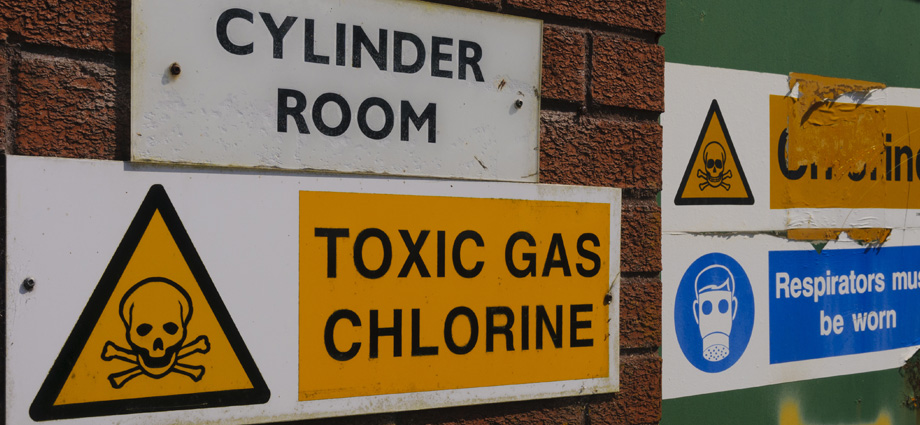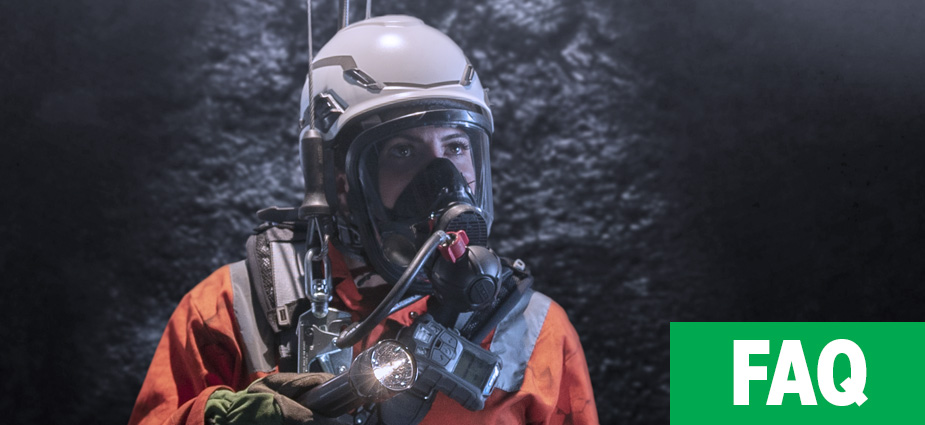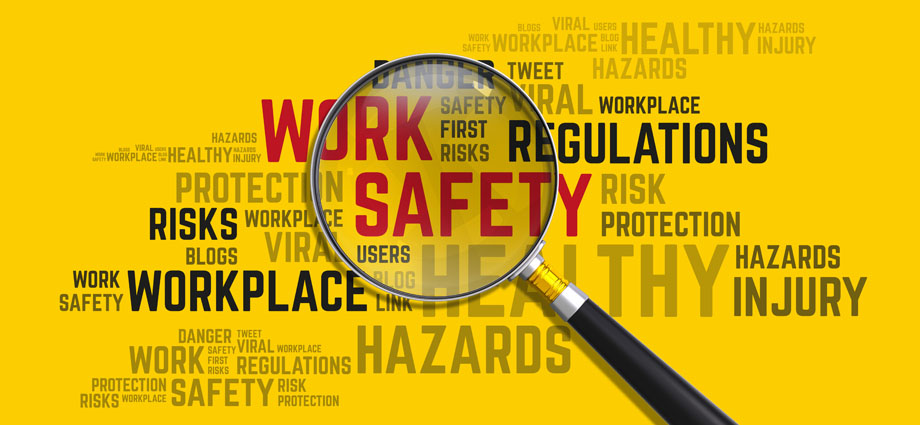
While you might not realize it, the chemical chlorine and its compounds are part of almost everyone’s daily life. The water you drink, the food you eat, the medicine you take, the clothing you clean, the pool you swim in, the car you drive, and thousands of other products are sanitized or manufactured with chlorine.
Chlorine is found in many industrial processes, including those used to make plastics, vinyl, and nylon. The electronics industry relies on chlorine in the production of microprocessors and computers. You’ll find chlorine supports the manufacture of gasoline additives, brake fluid and antifreeze, as well as popular metals such as titanium, magnesium, and aluminum.
How can something that is so common also be so dangerous and potentially deadly when used improperly? Chlorine gas is toxic and green-yellow in color at room temperature. It is also water-soluble. At 0.3 to 0.5 ppm, you can start to smell chlorine gas and trouble soon follows in higher concentrations.
Chlorine burns the eyes, nose, and throat—eventually causing bronchial inflammation, respiratory tract damage, and loss of life. Chlorine is heavier than air, which means that it remains near the ground and exposure victims need to be moved away from the contaminated environment.
Accidental exposure to chlorine gas need not be deadly when the proper safety procedures and equipment are in place. Both the U.S. EPA and OSHA have strict regulations for the use of chlorine. Many accidents are preventable with the proper training and toxic gas monitoring equipment.
In the workplace especially, intelligent fixed gas detection systems such as the SENTRY io Controller paired with our ULTIMA X5000, General Monitors S5000, or TG5000 Gas Monitors can be installed to sound a warning alarm in plenty of time to evacuate fellow employees. Such systems are suitable for a wide range of industrial environments:
Oil Refineries
Oil refineries inject chlorine directly into stacks to reduce sulfur emissions (H2S for example) and require monitoring. The sulfur monochloride compound that forms in the stack is a solid and can drop out of the air flow in the stack and coat the inside of the stack itself, or drop down to the bottom of the stack where it can be collected. The ULTIMA X5000 gas detector can be used to monitor potential chlorine leakage around the bulk storage tanks too.
Clean Water Treatment
Chlorine is added to treat drinking water to destroy bacteria and other harmful micro-organisms. It also controls algae and helps improve the taste and smell of fresh water. Chlorinating basins and well sites have small buildings enclosing chlorine storage tanks with mixing systems. Fans provide a ventilation system, with gas detectors installed for monitoring and alarm purposes in case of a system leak.
Sewage Wastewater
For neutralization of effluent, a complete (Cl2) chlorination system is often used at waste treatment facilities. Toxic gas detectors are used to detect chlorine gas at these locations: the chlorine tanks, the chlorine dosing pump, the chlorine mixer, and the sampling area.
Pharmaceuticals Production
Most prescription and over-the-counter pharmaceuticals contain or are manufactured with chlorine. Some of the more common medications that are made using chlorine include pain relievers, decongestants, antihistamines, and antibiotics. Toxic gas detectors are utilized both within the areas where pharmaceuticals are processed, as well as in storage tank areas.
Pulp/Paper Bleaching
Bleaching of pulp is a series of chemical reactions conducted in stages. These reactions are carefully controlled to bleach the pulp without destroying the strength of the fiber. Chlorine gas and water are added to the eductor prior to the mixing stage. Toxic gas detectors can be used to monitor for chlorine gas leakage during the bleaching process.
Pesticides for Agriculture
With world hunger continuing to be a pressing problem, chlorine is used in the manufacturing process for crop protection chemicals. Such chemicals help crops resist disease, insects, and weeds. In large pesticide manufacturing operations, toxic gas detectors are found in the mixing and blending areas, as well as in storage tank areas for both raw materials and finished products.
Food & Beverage
From meat to produce to beverages, chlorine is applied as a disinfectant and antimicrobial agent. Chlorine is used as a sanitizer in cleansing employee hands and footwear, in the washing of beef carcasses, in fruit/vegetable spray washing or flume systems, and in the processing of eggs, seafood, and much more. Wherever chlorine is stored in tanks or dispensed with injection systems in heavy concentrations, fixed toxic gas detectors can protect people and equipment.
Chlorine plays a vital role across a wide range of industries, from water treatment and pharmaceuticals to agriculture and food production. While it is an essential element in many processes, it also poses significant risks if not handled properly. That’s why the implementation of advanced gas detection systems is crucial to ensuring workplace safety. These intelligent systems can effectively monitor chlorine levels, helping to prevent accidents and safeguard lives. With proper safety measures, training, and monitoring, industries can continue to benefit from chlorine while minimizing the dangers of exposure.







